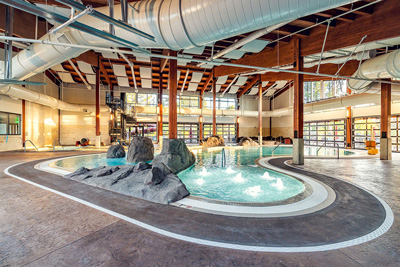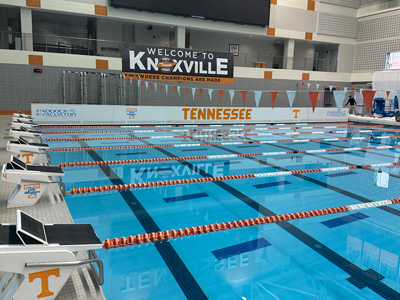Indoor pools often suffer from issues with indoor air quality. According to the U.S. Centers for Disease Control and Prevention, when you smell “chlorine” at an indoor pool, what you’re really encountering are chloramines. Chloramines are formed when the chlorine in the pool reacts to compounds in sweat, urine, dirt and other substances. Chloramines can lead to health issues for swimmers or employees who spend a lot of time in the facility, and at the same time can cause corrosion and damage to equipment. Keeping your indoor pool’s air free from chloramines is essential to protect your pool and your patrons.

Q. We’re building a new indoor pool, but we’re concerned about air quality and chloramines. What should we consider?
A. Be sure you work with an Aquatic Designer who has experience designing indoor pools. You will also want to be sure that they work in conjunction with an experienced Mechanical Engineer that understands the complex air handling requirements of natatoriums. If good indoor air quality is a focal point, then demand the specification of a low source-capture system that will collect and evacuate chloramines at the pool surface. In the case of designing a new pool get the low source capture system as close to the pool surface as possible. You can also work with the dehumidification manufacturer to have the systems work together and save money by gaining heat recovery from the exhausted air and using it to heat the pool.

Q. Our indoor pool has air quality issues, and swimmers are complaining. What can we do to improve the situation?
A. The same low source-capture technology that can be specified for a new pool is available in retrofit systems that can be installed in an existing pool. Depending on the renovation budget available there are multiple options. Gutter and deck drain options would require replacing those existing systems and replacing the pool deck. Typical renovations for improving natatorium indoor quality involve installing either wall or bench systems with an independent fan, that allow for the chloramines created in the pool to be captured and evacuated from the building before they reach the HVAC returns and are recirculated in the facility.
For More Information
Paddock Pool Equipment Co. Inc.
800-849-2729
www.paddockpoolequipment.com


